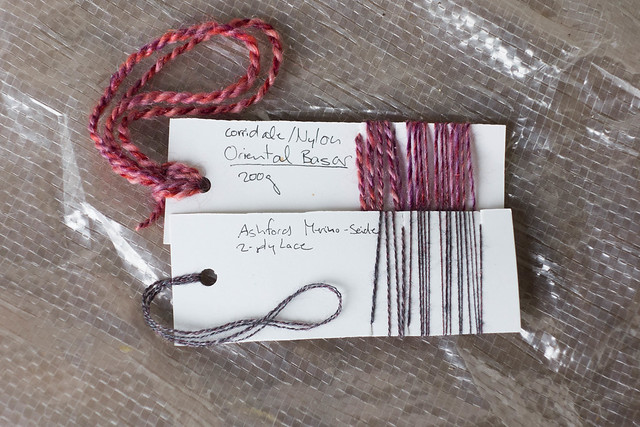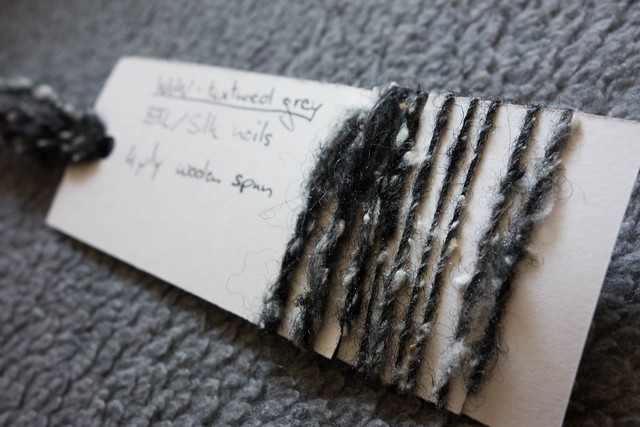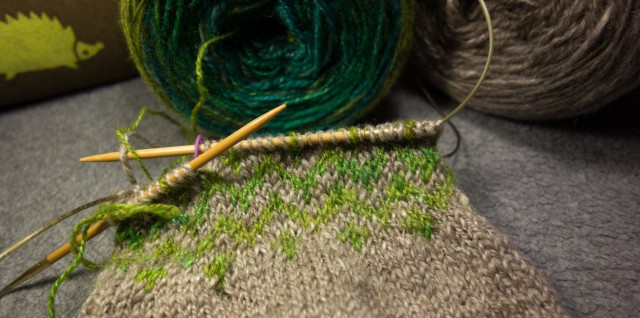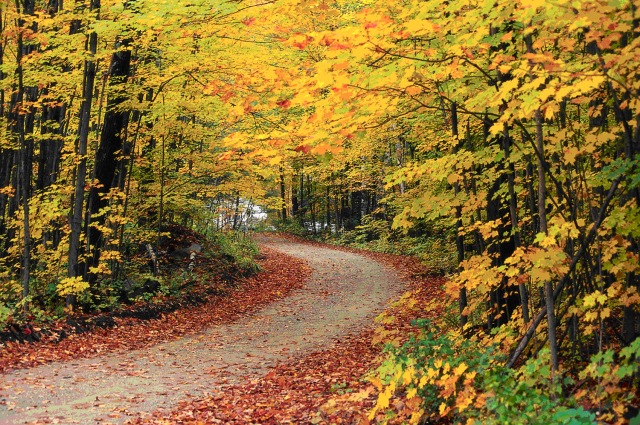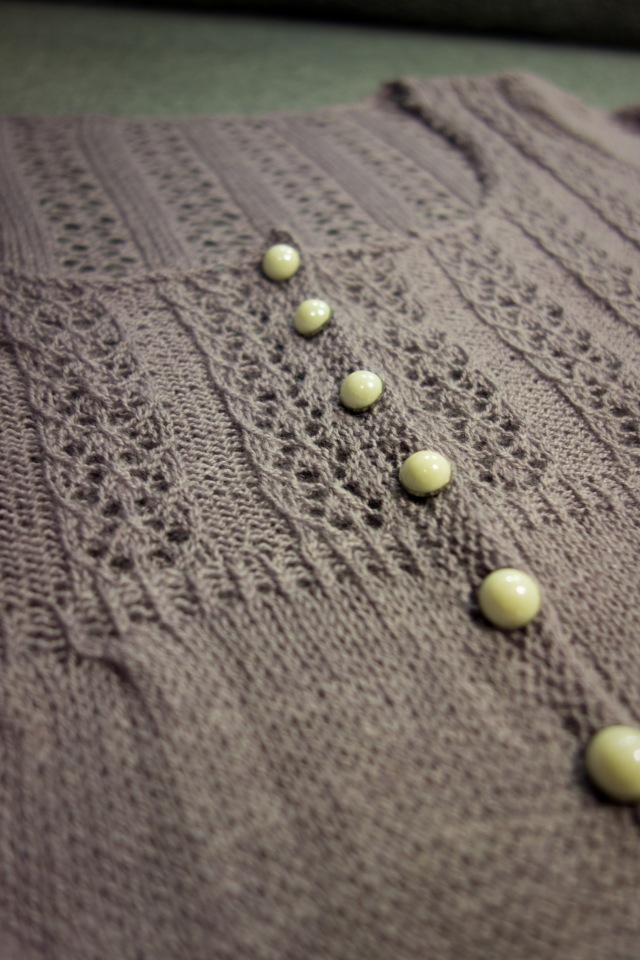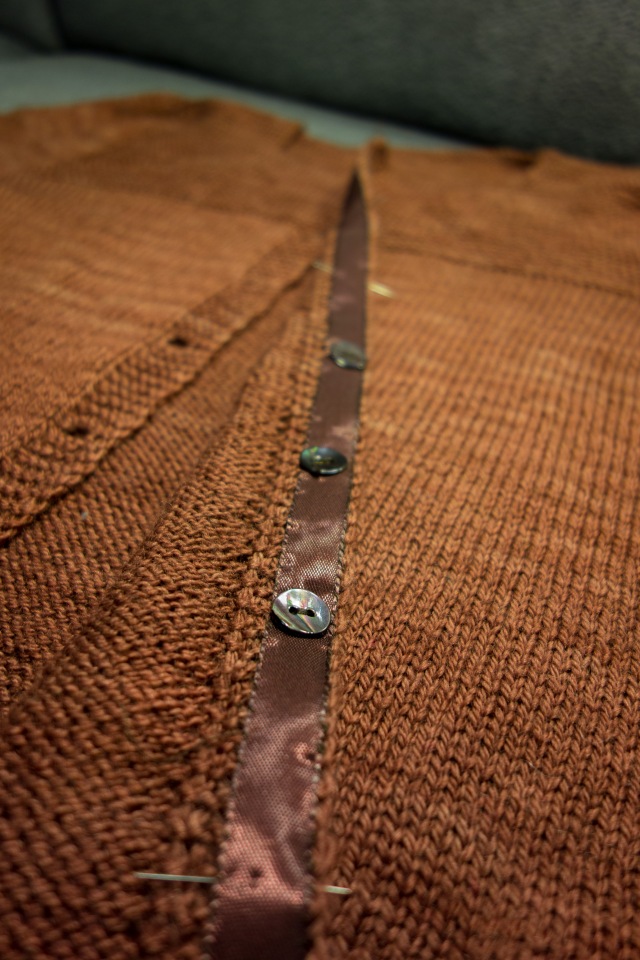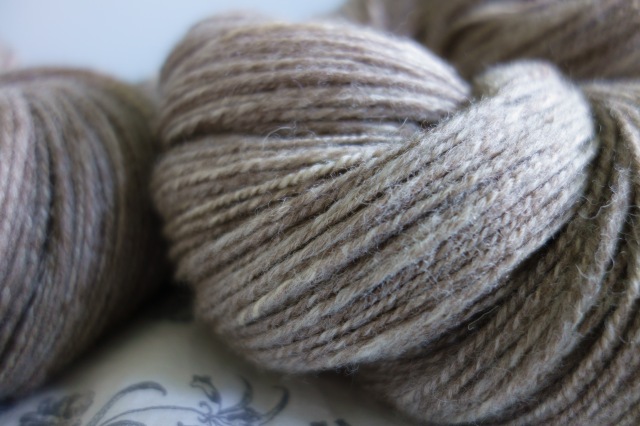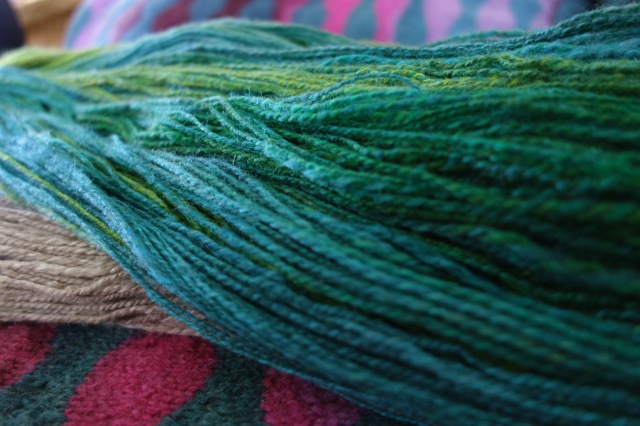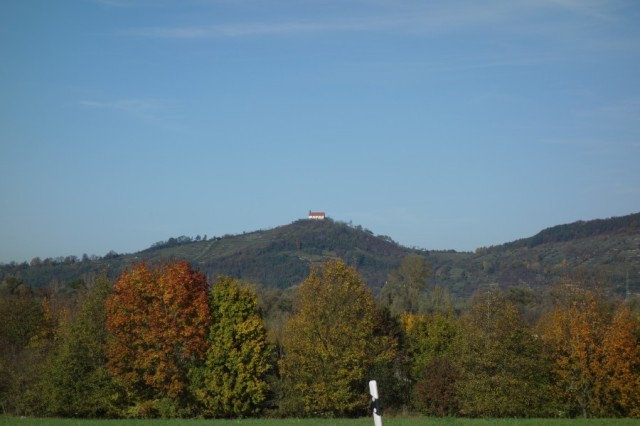Sample cards are a way to record how you spun a certain yarn. It can help to spin consistently during a bigger project, keep a record of different spinning projects, measure improvement in your spinning technique and so on. Some people use them for every project, some never use them. I think they are a useful tool to spin a consistent yarn and help you in spinning thinner or thicker than you usually feel comfortable.
I personally use sample cards if I have a spinning project where I have a certain yarn or knitted/woven project in mind and want to ensure that the resulting yarn is what I wanted. I also like them for an easy way to spin an even yarn, especially if the intended thickness of the singles is thicker than I usually spin.
I use plain cardboard for my sample cards; I have DIN A5 cardstock which I cut into four strips before punching a hole in one end and making a few cuts to secure the ends. At the beginning of a new project, I spin a few lengths of singles. I either make an extended sample, i. e. spin, ply and wash the yarn and knitting a swatch before recording the yarn with a sample card. If I am confident I know that the singles will give me the yarn I want, I might make a sample card immediately.
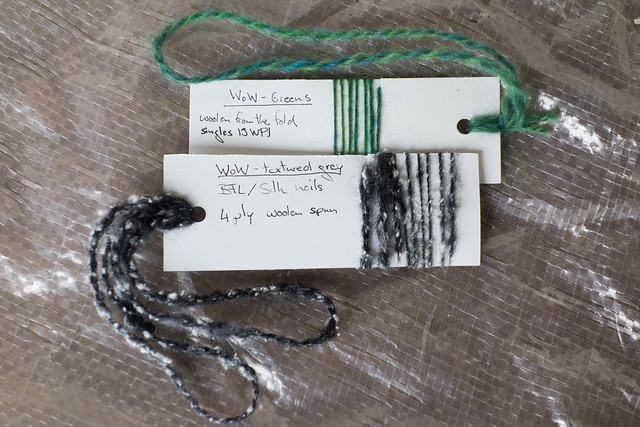
Those are sample cards for bigger projects.
In addition to the cards, I knitted swatches to decide if I like the fabric.
I usually wind a singles around the card, as well as a ply back (that is, letting a freshly spun singles ply back at itself). I use the hole to hang a bit of yarn from it. Ideally that is the yarn how I want it to look after plying, before it is finished. Often, it is just another ply back. More often than I than not, only write down the fiber I’m using, and sometimes I change my mind what yarn to spin because of the sample but don’t make a new one. This applies mostly to plying, because I can still use the card to reference the singles. If I decide to spin the singles in a different way, I would either have to make a new sampling card or to not use one as a reference.
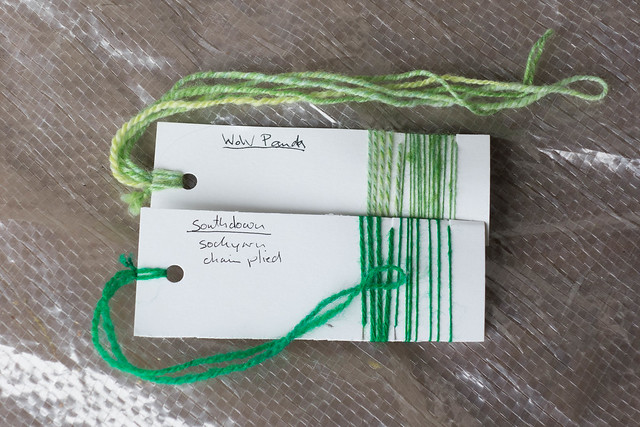
Sampling cards for two sock yarns.
Both are 3-ply, one traditional, one chain plied. The top one has a length of the 3-ply hanging from the loop, the bottom one a ply back
While I spin a certain yarn, I have the sample card on or near my wheel (I hang it from the tensioning knob). But I hold onto my sample cards even after finishing a project. That way, I can compare improvements in my spinning and can recreate a yarn if I want to. It is also nice to have a reference what the singles and unfinished yarn looked like when I have used the yarn in a knitted or woven project.
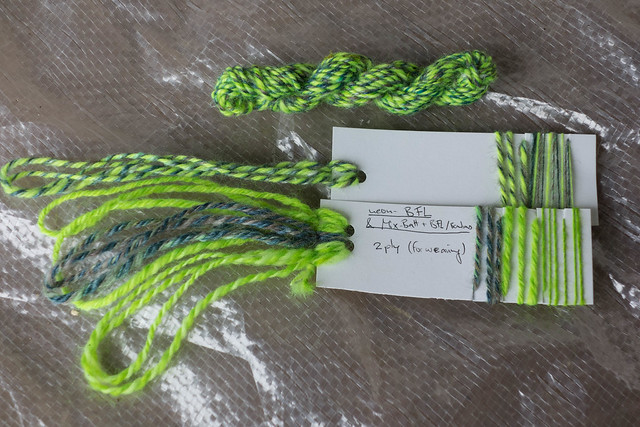
Initially, I wanted to make a 4-ply with the different colors plied together (top).
I tried separate 4-plies, but decided to use it for weaving and do 2-plies (strand at the bottom left).
It doesn’t take long to make a sample of your spinning and I like to look at my sample cards from time to time. I find their usefulness is well worth the few minutes it takes to make one!
Try it!


